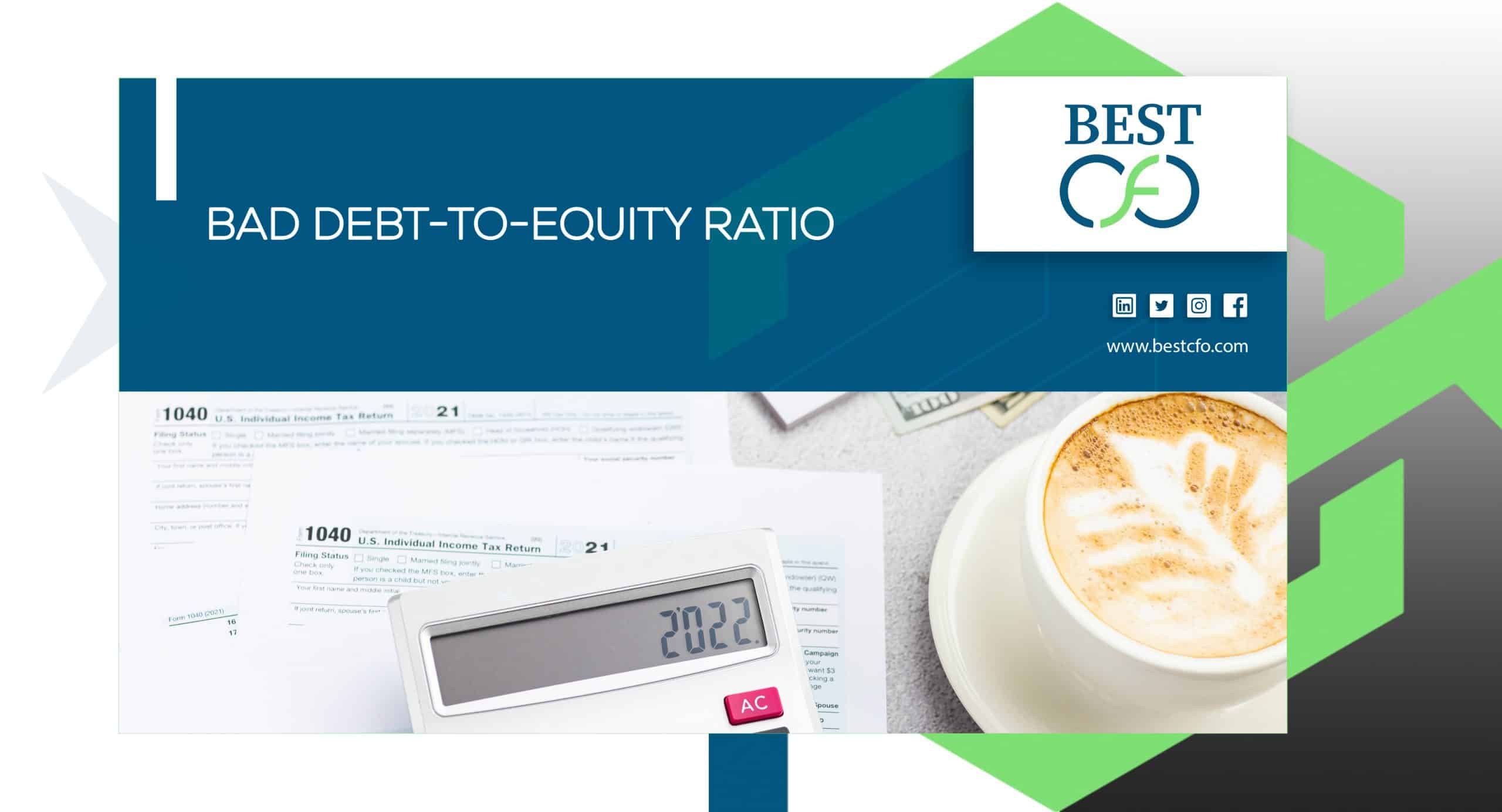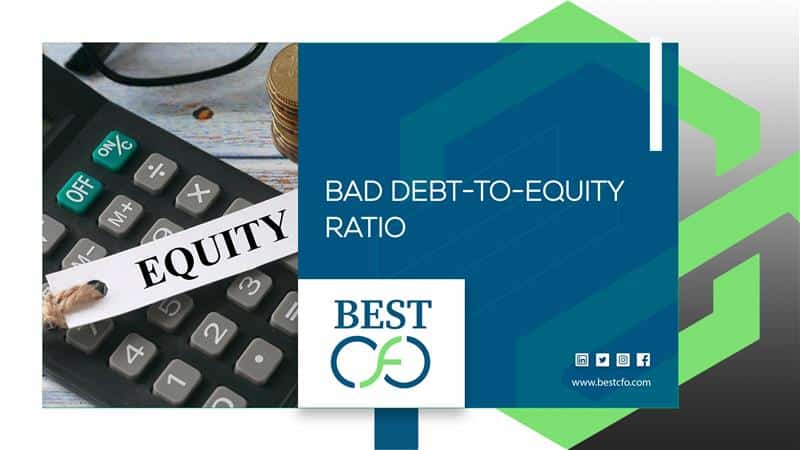
| Getting your Trinity Audio player ready... |
How to Improve Your Bad Debt to Equity Ratio: A Complete Guide
If you’ve ever looked at your company’s financial reports and seen a bad debt-to-equity ratio, you might’ve felt that uneasy twinge. What does it mean? Is your business in trouble? And more importantly—how do you fix it?
Let’s break it down in plain English. In this guide, you’ll learn:
- What the debt-to-equity (D/E) ratio is
- Why a “bad” ratio hurts your business
- What causes it to go south
- And most importantly, how to improve your bad debt to equity ratio smartly
Whether you’re a startup, a growing business, or just trying to clean up your books, this guide will walk you through everything step-by-step.
Understanding the Debt-to-Equity Ratio
Let’s start simple. Your debt-to-equity ratio compares how much money your company owes (debt) to how much it owns (equity).
Here’s the basic formula:
Debt-to-Equity Ratio = Total Liabilities / Shareholders’ Equity
- Debt includes what your business owes—like short-term loans, long-term debt, credit lines, or unpaid bills.
- Equity includes what your business owns—like retained earnings, shares issued, and any capital invested by owners.
This ratio shows how risky your company is to investors and lenders. A higher ratio means you’re funding your business with borrowed money. A lower ratio means you’re mostly using your own resources.
What Is Considered a Bad Debt-to-Equity Ratio?
What counts as “bad” really depends on your industry. But generally:
- A D/E ratio over 2.0 is seen as risky in most sectors.
- Some industries (like construction or airlines) naturally carry more debt, so they may tolerate higher ratios.
- Tech or service companies often aim for ratios below 1.0.
Risks of a High D/E Ratio:
- Difficulty getting new loans
- Higher interest payments
- Lower credit ratings
- Financial stress in tough times
Risks of a Very Low D/E Ratio:
- You might be too conservative
- Missed growth opportunities due to a lack of funding
- Under-leveraging your assets
So it’s all about balance. Too high? Too much debt. Too low? Not enough bold moves.
Why Does a Bad Debt-to-Equity Ratio Need Improvement?
A bad debt-to-equity ratio sends red flags to banks, investors, and even your own team. Here’s why fixing it matters:
- Better Credit Chances: Lenders are more willing to offer credit to businesses with stable ratios.
- Stronger Investor Confidence: Investors want to know their money isn’t drowning in debt.
- Business Survival: If you can’t handle debt wisely, it could lead to bankruptcy or shutdown.
Fixing your ratio boosts trust and opens up more opportunities to grow.
Causes of a High Bad Debt-to-Equity Ratio
Before you fix a bad ratio, you need to know what caused it. Let’s look at some common reasons:
Excessive Borrowing
- Relying too much on loans for expansion or daily operations
- Not increasing equity at the same pace as debt
Declining Equity
- Ongoing business losses eat away at retained earnings
- Buying back shares without enough profits to support the move
Poor Revenue & Profitability
- Low cash flow forces you to borrow more
- Struggling to earn enough to pay off current debts
Economic & Industry Factors
- Rising interest rates make debt more expensive
- Industry slowdowns affect asset values and equity returns
Understanding the root cause helps you apply the right fix.

Strategies to Reduce Your Bad Debt-to-Equity Ratio
Now to the part you’ve been waiting for—how to actually improve your bad debt-to-equity ratio.
Reduce Total Debt
- Pay Down Existing Debt
- Use the debt avalanche method: Pay off high-interest loans first
- Refinance old loans to get better rates or longer terms
- Negotiate with Creditors
- Request more time to pay off debt
- Try to settle for less with lump-sum deals
- Avoid Taking On New Debt
- Cut non-essential costs to reduce borrowing
- Fund expenses using your existing cash flow whenever possible
Increase Shareholders’ Equity
- Retain More Earnings
- Keep profits in the business instead of paying big dividends
- Boost income by cutting costs or growing sales
- Issue New Equity
- Sell more shares (be careful of dilution)
- Raise money through private investors or an IPO
- Improve Asset Management
- Sell unused equipment or buildings to increase equity
- Manage inventory and receivables better to unlock tied-up cash
Optimize Business Operations for Better Cash Flow
- Grow Revenue: Offer new products or expand to new locations
- Cut Operating Costs: Negotiate better deals with suppliers, automate where possible
- Collect Payments Faster: Give discounts for early payments, tighten credit terms
Strategic Financial Planning & Forecasting
- Conduct financial reporting and analysis
- Set goals for debt reduction and equity growth
- Use “what-if” models to see how economic shifts might affect your D/E ratio
Real-World Examples of Companies Reducing Their Bad D/E Ratio
Here are some real-world examples to understand the importance of improving the bad debt-to-equity ratio:
Case Study 1: A Turnaround with Debt Reduction
A mid-size retail brand ( once had a D/E ratio of 3.5, which is too high to attract new funding. They took these steps:
- Sold underused warehouses
- Renegotiated supplier contracts
- Paid down debt using extra cash flow
Result: Their ratio dropped to 1.8 in 12 months. They regained investor confidence and secured a new growth loan.
Case Study 2: Boosting Equity Smartly
A tech startup with low cash and a 2.8 D/E ratio issued new shares and retained more of its profits. They:
- Delayed bonuses and dividends
- Focused on cost-effective marketing to grow revenue
Outcome: Equity grew by 40%, bringing their ratio under control and setting them up for a successful Series B funding round.
Common Mistakes to Avoid When Fixing Your Bad Debt-to-Equity Ratio
- Overcorrecting: Going too equity-heavy may slow growth
- Ignoring Cash Flow: Don’t fix the ratio at the cost of daily liquidity
- Bad Equity Deals: Issuing too many shares may hurt ownership value
- Misjudging Industry Norms: Always compare your ratio to similar companies, not random benchmarks
Tools & Resources for Monitoring Your Debt-to-Equity Ratio
Stay on top of your numbers with these tools:
- Financial Software: QuickBooks, Xero, SAP—track debt and equity easily
- Excel Templates: Build custom spreadsheets for monthly monitoring
- Credit Agencies: Check Moody’s, S&P ratings for industry benchmarks
- Expert Help: Financial advisors or fractional CFOs can guide strategic planning
How Best CFO Helps SMBs Reduce Bad Debt to Equity Ratio?
If your business is struggling with a high bad debt-to-equity ratio, Best CFO is here to help. We work with small and medium businesses to:
- Restructure debt
- Improve cash flow
- Boost equity growth
- Offer strategic financial planning
Our expert CFO services provide real-world solutions that help reduce risky ratios and set your business on the right path.
Conclusion
Your bad debt to equity ratio doesn’t have to stay bad forever. By understanding the root causes and applying smart strategies, you can bring your finances back into balance.
Remember:
- Cut down unnecessary debt
- Boost equity through profits and smart investing
- Stay proactive with financial reviews and planning
And if you need help turning your numbers around—Best CFO is just a call away.
FAQs
1: What is a good debt to equity ratio for most businesses?
Usually between 1.0 and 2.0, but it depends on your industry.
2: Can a low D/E ratio be bad?
Yes, it might mean you’re not using debt effectively to grow.
3: How often should I check my D/E ratio?
At least quarterly—monthly if you’re actively working to improve it.
4: Is it better to pay off debt or raise equity first?
It depends on your cash flow, interest rates, and growth needs.
5: How does Best CFO help?
We provide tailored financial strategies to help reduce debt, grow equity, and improve your financial health.
Related Posts
Organic vs Inorganic Marketing: Pros, Cons, and Best Use Cases
Organic vs Inorganic Marketing: Pros, Cons, and Best Use Cases When it comes to growing…
What Is Operating Capital and Why Is It Important?
What Is Operating Capital and Why Is It Important? Are you ready to dive into…
How to Scale a SaaS Business Without Losing Your Customers?
What Are the 5 Sources of Funding? So, you’ve got the dream. The vision. The…
What Are the 5 Sources of Funding?
What Are the 5 Sources of Funding? So, you’ve got the dream. The vision. The…
 Demos
Demos  Colors
Colors  Docs
Docs  Support
Support 














